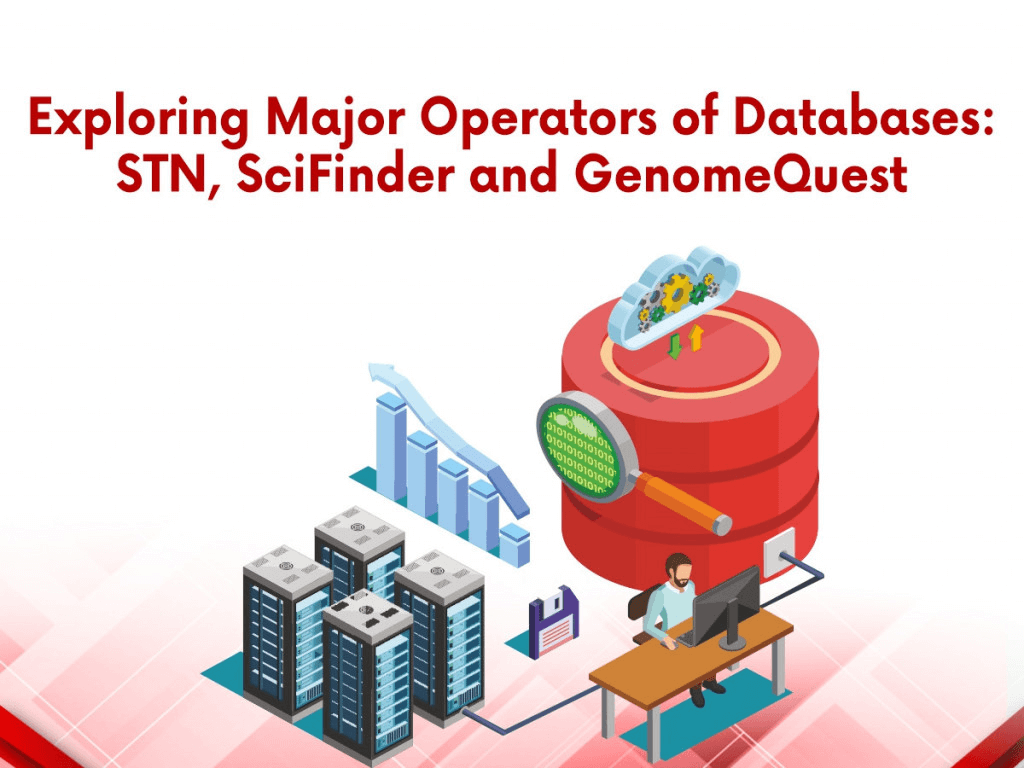
Close


In the world of scientific research, there are several databases available that are used to help researchers find the information they need. In this blog, we will explore three such databases: STN, SciFinder, and GenomeQuest.
STN (Scientific and Technical Information Network) is a database that provides access to a wide range of scientific and technical information. It is maintained by CAS (Chemical Abstracts Service), which is a division of the American Chemical Society. STN is an online database that is accessed through a web browser or dedicated client software.
To use STN, you need to have a subscription or access through an institution. Once you have access, you can search for information using a variety of commands and operators. Some of the most common commands used in STN include:
STN also provides a range of operators that are used to refine searches. These operators include:
The coverage of STN includes a wide range of scientific and technical information, including chemistry, engineering, and biomedical sciences. The output of STN includes bibliographic information, abstracts, and sometimes full-text articles.
One of the main advantages of using STN is the ability to search multiple databases at once. This can save researchers a significant amount of time, as they can search for information across a wide range of disciplines without needing to visit multiple databases.
SciFinder is another database that provides access to scientific information. It is maintained by CAS and focuses specifically on chemistry and related fields. Like STN, SciFinder requires a subscription or access through an institution.
To use SciFinder, you search for information using a variety of commands and operators. Some of the most common commands used in SciFinder include:
SciFinder also provides a range of operators that are used to refine searches. These operators include:
The coverage of SciFinder includes a wide range of chemical and related information, including chemical substances, reactions, and properties. The output of SciFinder includes bibliographic information, abstracts, and sometimes full-text articles.
One of the main advantages of using SciFinder is the ability to search for chemical substances and reactions in a highly specific way. This saves researchers a significant amount of time, as they quickly find information on specific chemicals or reactions without needing to sift through large amounts of irrelevant information.
GenomeQuest is a database that provides access to genomic information. It is maintained by GenomeQuest Inc. and focuses specifically on genomic data. GenomeQuest requires a subscription or access through an institution.
To use GenomeQuest, you can search for information using a variety of commands and operators. Some of the most common commands used in GenomeQuest include:
GenomeQuest also provides a range of operators that are used to refine searches. These operators include:
The coverage of GenomeQuest includes a wide range of genomic information, including DNA and protein sequences, genes, and genetic variations. The output of GenomeQuest includes sequence data, gene annotations, and comparative genomic analyses.
One of the main advantages of using GenomeQuest is the ability to search for genomic information in a highly specific way. This can save researchers a significant amount of time, as they can quickly find information on specific genes or genetic variations without needing to sift through large amounts of irrelevant information.
In conclusion, STN, SciFinder, and GenomeQuest are three powerful databases that can help researchers find the information they need more efficiently. By using a variety of commands and operators, researchers can refine their searches and quickly locate relevant information. With the ability to search across multiple databases and focus on specific fields or disciplines, these databases save researchers a significant amount of time and effort.
Authored by – Guniyal Bagga
Please Subscribe our news letter and get update.
© Copyright 2023 – Wissen Research All Rights Reserved.
Powered by VintageCoders